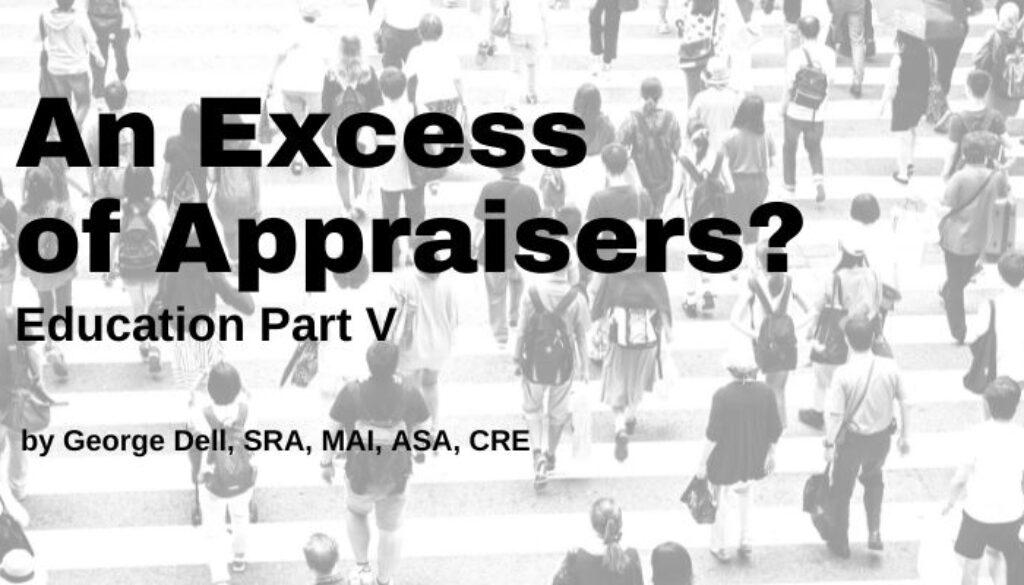Appraiser education is part of the “Big Stymie.” The five forces of friction: practices, standards, education, regulation, and client expectation – all interact to impede progress in appraisal. And of these, regulation and education create the long-term blockage. A blockage that will not be resolved until we have a political response to the reality.
The education side of this is simple to explain. Appraisal methods developed in the 1930s to 1950s continue to be embedded in books, classes, and the beliefs and memories of the graying educators in this field. The oldest taught the old, and the old teach the new. And the new know nothing about the new, the modern analytic methods which are objective, reliable, understandable, faster, and cleaner.
Note that the current education is the old education. “Provide a subjective opinion, not an objective result.” The new education is what is needed. So what stymies progress?
Regulation. Layers of laws, advisories, guidelines, codes, rules, standards, and fees. All based on the three ‘approved’ approaches: 1) pick some comps approach; 2) in come da dough approach, and; 3) wrote the checks approach.
Regulations in this “industry” are broad, wide, disparate, and create a psychology of “that’s the way we’ve always done it.” This, even as there is no real overt awareness of our own assumptive beliefs. Pick some comps. Make some adjustments. Bestow an opinion “worthy of belief.”
What prohibits innovation and progress in education? The answer is simple. Regulation. Regulation enforced by American states following the 15 pages or so, in USPAP (including the preamble) – on how to do an appraisal.
To teach one class nationwide, requires about 120 separate, different application forms. Many states require three forms and three fees: one for the class, one for the school, and one for the instructor. All for only about $7000. Then repeat three years later. Sometimes unreturned phone calls, unreturned emails, approvals unposted on the state website for students. Some requiring a 10-dollar fee for any upcoming class event. (Even if no student arrives from that state.) Others a 10-day window to report on a class. You get the idea.
And if you update for rapidly changing analytic technology, it will cost you. . . yes. . . only $6000.
This is why the big organizations and seat-hours schools only update every 5 years or so. Gotta make a profit! Quantity over quality over modernization.
And so the 1930’s algorithm beat goes on.
Of the five frictions only one has a chance to stop cycles — cycles of economic downturns, housing security, national risk, and appraiser excess. Current practice cannot change on its own. Standards are stuck in ‘worthy of belief’ stage. Client expectation is enforced in the standards. Education is stymied by all the above. Only a radical and enlightened simplification of regulations can make a difference.
Until that happens, we will continue to have “appraisal” as a continuing pro-cyclical effect on the economy.
Contrarily, data science analytics technology allows risk/reliability measures, easy annual revaluations, and facilitates portfolio risk and management, and automatic counter-cyclical effects.
We strive for this in the Valuemetrics.info curriculum, and in the tools and protocols embraced by the Community of Asset Analysts. But the only freedom to change can come from regulatory relief.
